Seoul can be a daunting city to first time visitors. This guide on where to stay in Seoul is designed to help you get your bearings and book accommodation in the neighbourhood that’s perfect for you.
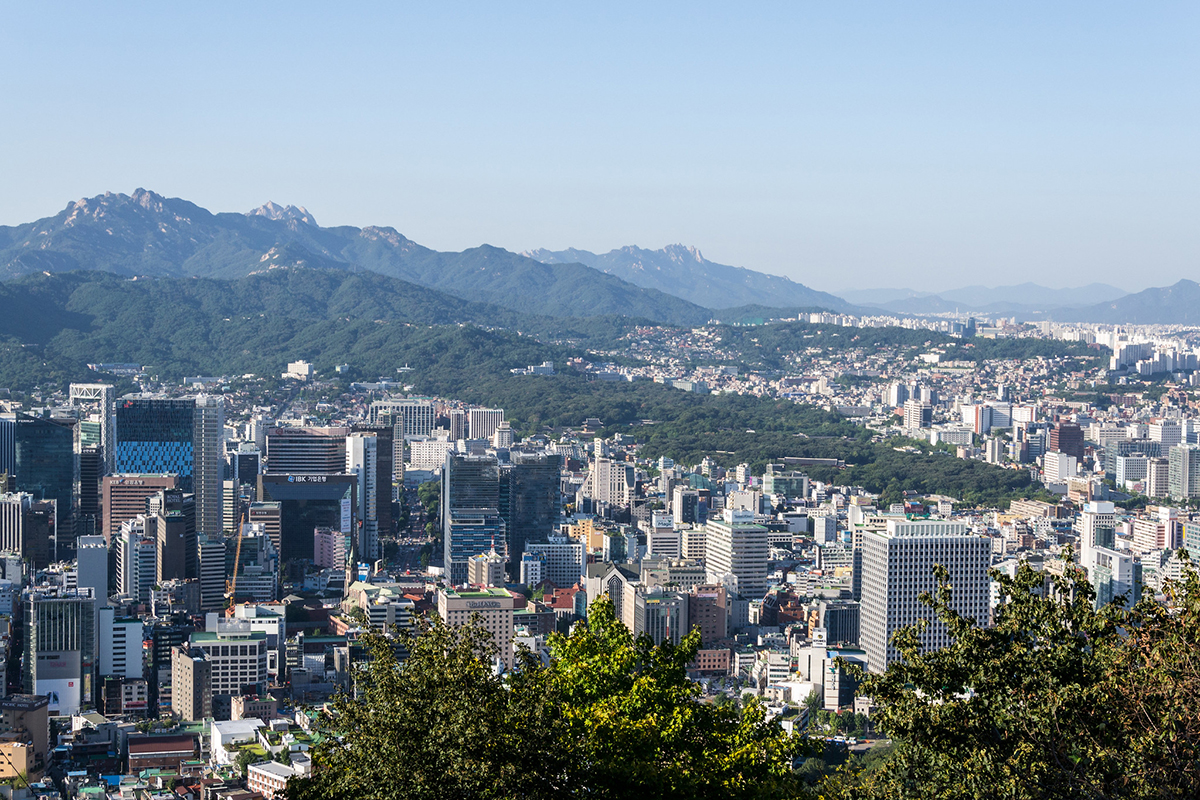
Beautiful Seoul (Photo: dconvertini via Flickr / CC BY-SA 2.0)
Seoul, a huge, modern metropolis with bright lights and busy streets, can take some getting used to. The city proper has a population of around 10 million people, while the greater metropolitan population has swollen to 25-million-plus in recent years and shows no sign of slowing down.
But for all of that, Seoul is increasingly becoming one of the world’s great cities. It contains very few trappings of other rapidly urbanising areas. Instead, Seoul is clean, efficient, modern and, by the standards even of western cities, safe. Seoul also enjoys a top-class public transport system and numerous vibrant neighbourhoods each presenting a unique and unusual face of the city to visitors.
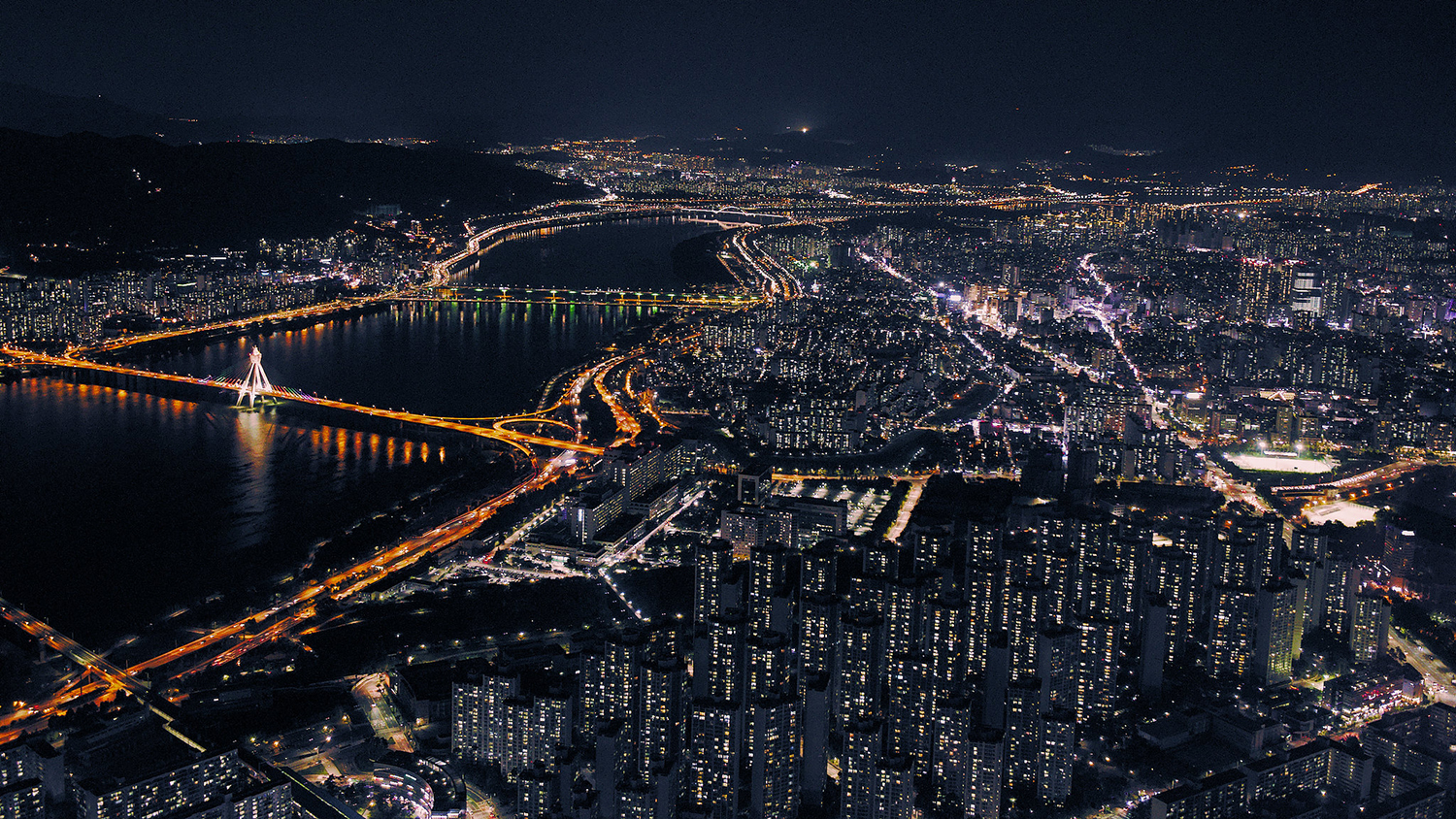
Seoul from the sky (Photo: Steffen Flor via Flickr / CC BY-SA 2.0)
Naturally, first-time visitors to Seoul will want to rapidly get their bearings and start visiting some of the city’s best sights, such as the Changdeokgung and Gyeongbokgung palaces, N Seoul Tower and Myeongdong shopping district. There are some excellent central neighbourhoods that allow both connectivity and good access to these sights, while others cater better towards those looking for nightlife, shopping or other activities.
Getting Around: Seoul has one of the world’s most modern and comprehensive metro systems. Every year it seems as though a new line is opened. At the time of writing there are 22 lines and many hundreds of different stations. More are being built. If you plan to stay in the area for more than a day, it’s worth getting a T-Money travel card, which can be purchased in the station or at any convenience store (E.g. GS25). Fares start at around 1,300 won (little over $1) and is the same for the buses. You can change from a bus to a train, or vice versa, as part of your journey, without paying extra.
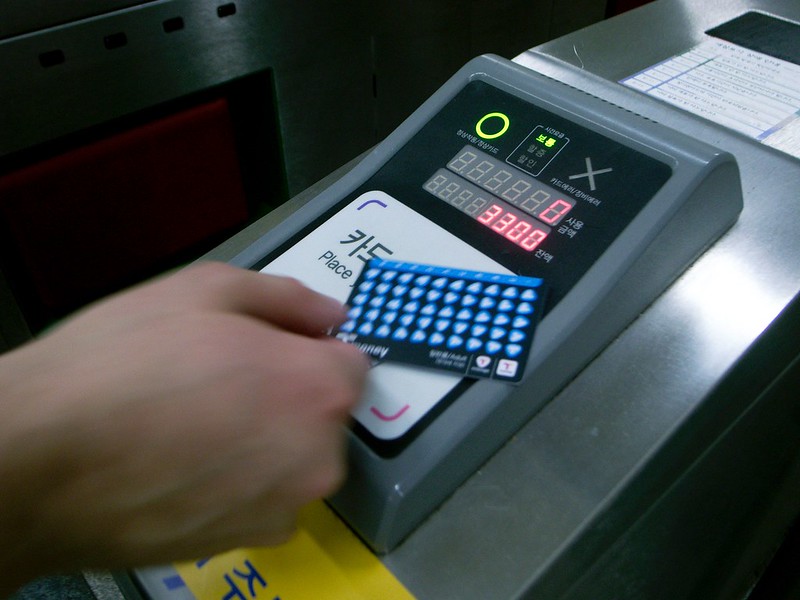
Using a T-Money card on Seoul’s Metro (Photo: Jon Åslund via Flickr / CC BY 2.0)
From the airport: Central Seoul is connected to the main airports – Incheon and Gimpo – via the Airport Railroad Express (AREX), which terminates at Seoul Station. From here you are around ten minutes from Myeongdong on foot or can connect to all neighbourhoods on this list via the Metro system at Seoul Station. Trains take roughly 45 minutes and tickets, which cost around 10,000 won ($9) one-way at the time of writing, can be bought from ticket machines at any station along the line.
Neighbourhoods
Here is a selection of the best neighbourhoods, and the best hotels within them, to help focus your search when planning where to stay in Seoul.
Insadong for world class sights
Insadong is the perfect location for those who love to explore a place on foot; walk in any direction and you’ll be sure to find something interesting. To the southeast is the sprawling market region of Dongdaemun, where high-rises are filled with small stores and independent sellers. South is the Cheonggyecheon, a pleasant pedestrian walkway along a stream, which replaced a busy flyover, now demolished.
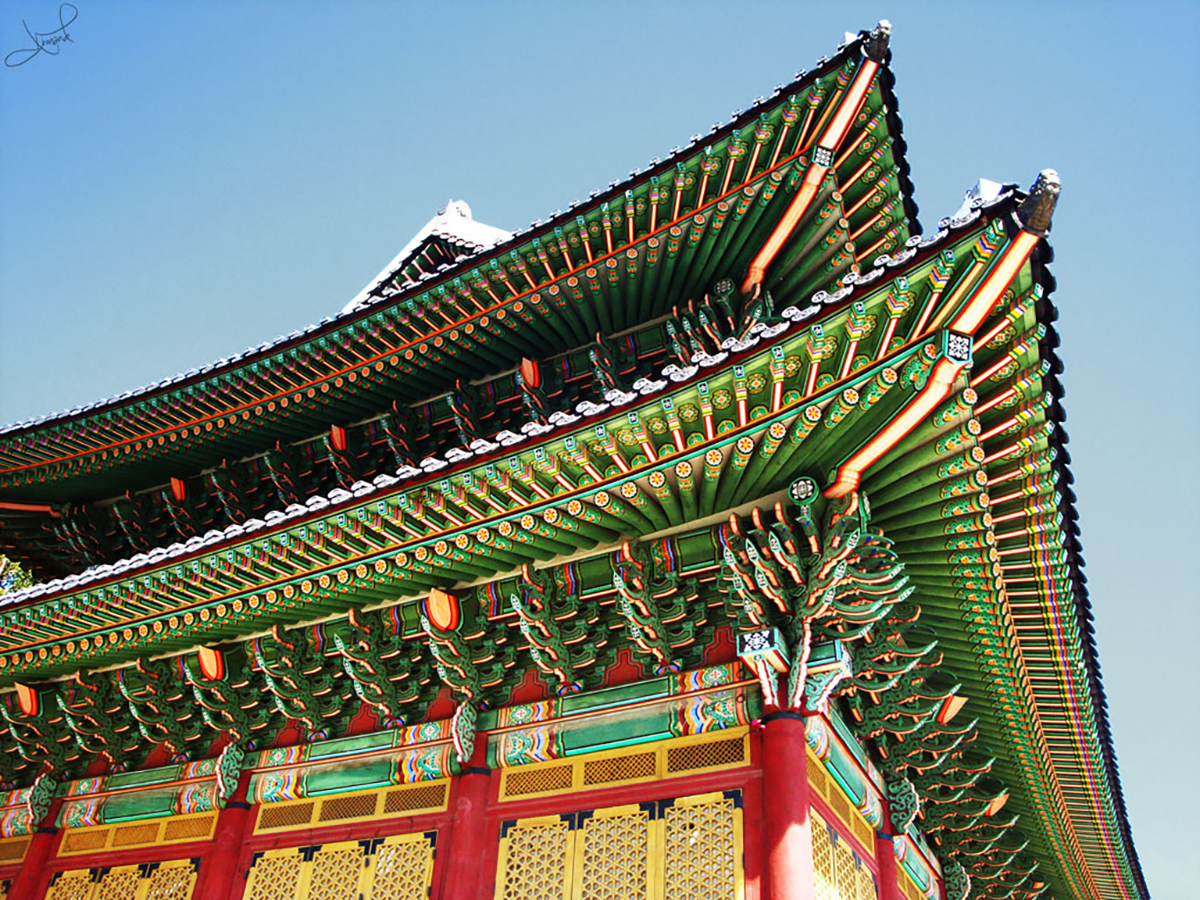
Eaves of impressive Changdeokgung (Photo: tsaiproject via Flickr / CC BY 2.0)
While there are modern high rises all around, there’s a distinctly traditional Korean flavour permeating everything in this region. This may have something to do with two of Korea’s most important sights, which are spread along the northern edge of the popular shopping street of Insadong: Changdeokgung Palace, with its secret garden, beautiful temples and leafy paths, and Gyeongbokgung, the main royal palace and gardens of the Joseon Dynasty. Between these two world-class relics are dozens of galleries and museums; The National Folk Museum is well worth a visit to learn more about Korean cultural history, which is easily missed in such a modern, tech-obsessed city.
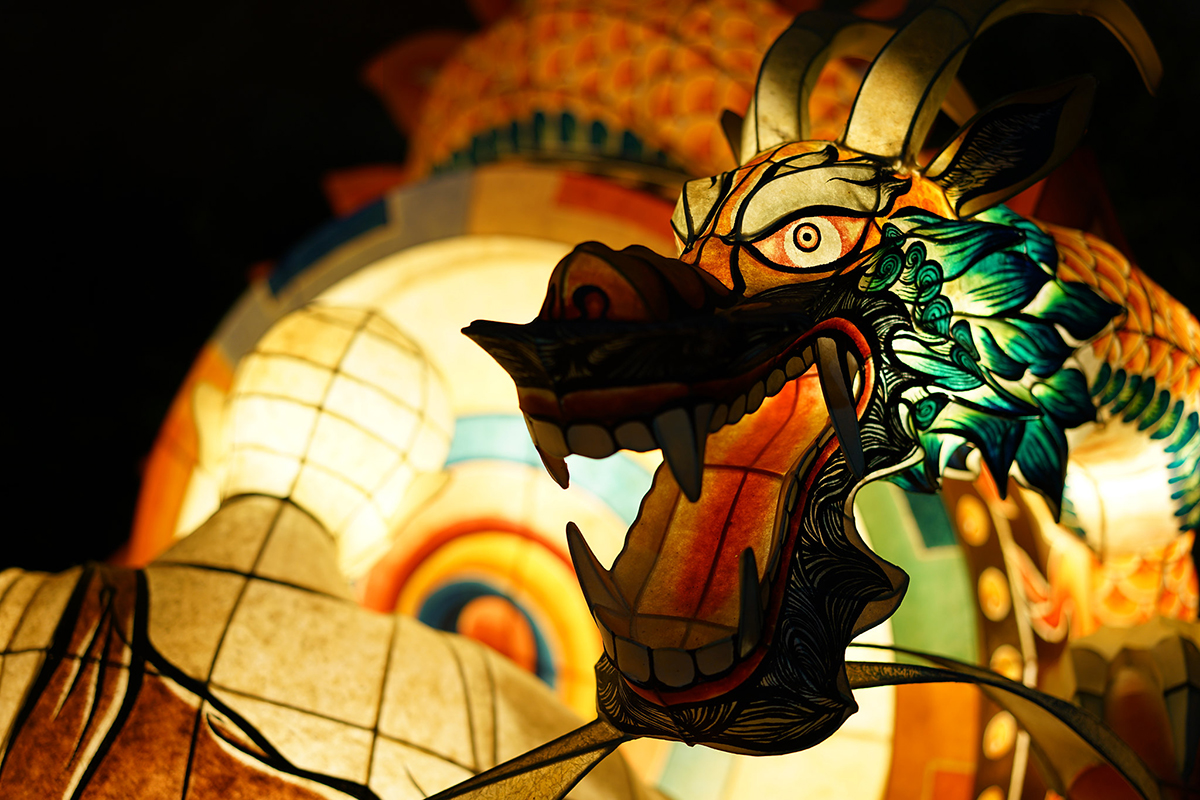
Lantern along the Cheonggyecheon (Photo: vincent G. H. Choi via Flickr / CC0 1.0)
Where to stay: In among the high rises, you’ll find plenty of great hotels and hostels. If location is everything to you, then the Nine Tree Premier Hotel Insadong is virtually unbeatable. It’s located at the top of Insadong street, close to both Changdeokgung and Gyeongbokgung, and pretty good value to boot. For a stay with a uniquely Korean twist, try a traditional Hanok house, where you sleep in blankets on a heated floor. Bukchonmaru Hanok Guesthouse is a good option in a pretty neighbourhood. Hostel Tommy is a popular option, with dorms and private rooms, located near Jongmyo Shrine.
Myeongdong for shopping
If you think your senses can handle the full-on Seoul city experience, then you might want to check out Myeongdong first. It is perhaps what can be considered the city centre (although there are major commercial and economic zones either side of the Han River in Seoul), thanks to its core network of thronging shopping streets, and nearby sights like Deoksugung Palace, the sprawling Namdaemun Market, and City Hall with Seoul Plaza, where concerts and events are held.
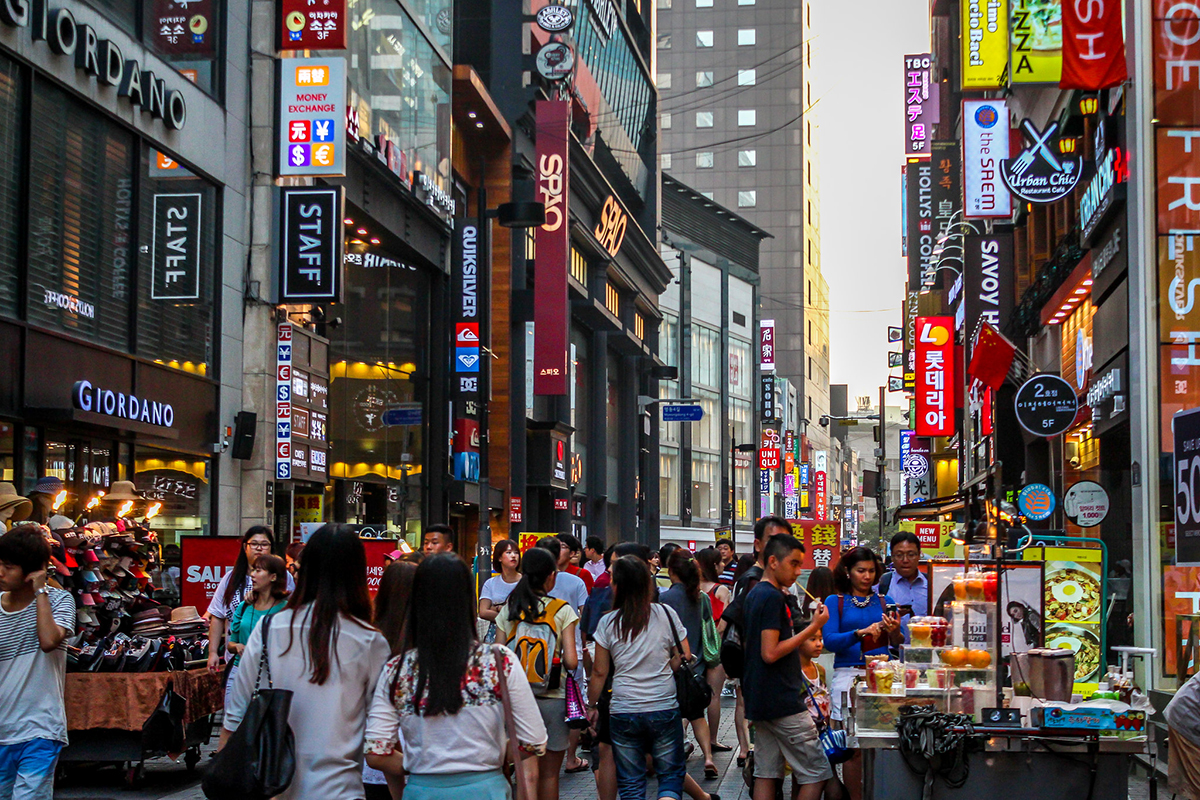
A hectic street in Myeongdong (Photo: Doug Sun Beams via Flickr / CC BY 2.0)
At night, the main shopping streets have enough neon signs to make it feel like daytime on some sort of fantastical planet. Friends often descend on the area in large groups to eat street food and browse the shops, which can be often found on three or four stories either side of the pedestrian streets. When the crowds become too much, Myeongdong also enjoys the best access to the forest-covered Namsan mountain, via road, steps or cable car. Views of the city from here, and especially from N Seoul Tower near the summit, are among the best in the city.
Where to stay: Myeongdong has hotels everywhere you turn. The five-star PLAZA Seoul is located on the edge of the shopping zone, near many of the big department stores and offers elegant luxury, including a swimming pool and spa. A better value option next to Myeongdong Metro Station is the Pacific Hotel, a four-star accommodation with large rooms and large beds. Myeongdong Rooftop Hostel, at the foot of Namsan, offers a range of budget rooms, including singles and family rooms.
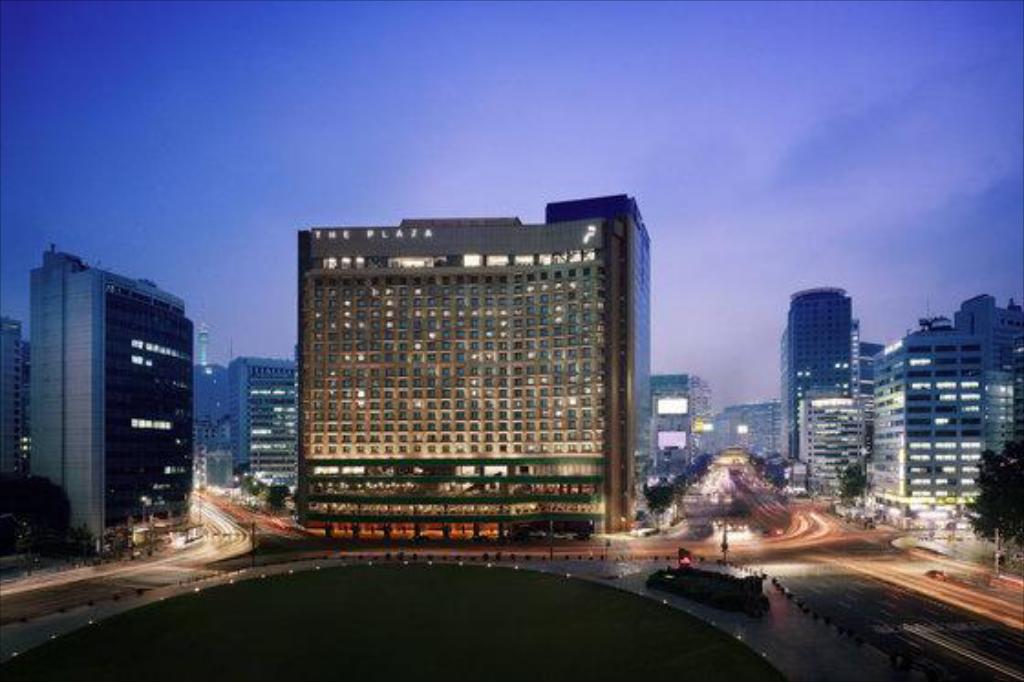
Plaza Seoul (Photo: Courtesy of Plaza Seoul)
Hongdae for youthful revelry
Some of South Korea’s most prestigious universities can be found clustered near the Hongdae region of Seoul to the west of the city centre. Among them are Hongik (Hongdae for short), Ewha Women’s and Yonsei universities. The latter is one of the country’s three most prestigious higher education institutions (Seoul National and Korea universities are also located in the capital). With so many young adults away from home for the first time to study, a vibrant, trendy nightlife has emerged in this area, with plenty of good value eateries and coffee shops too.
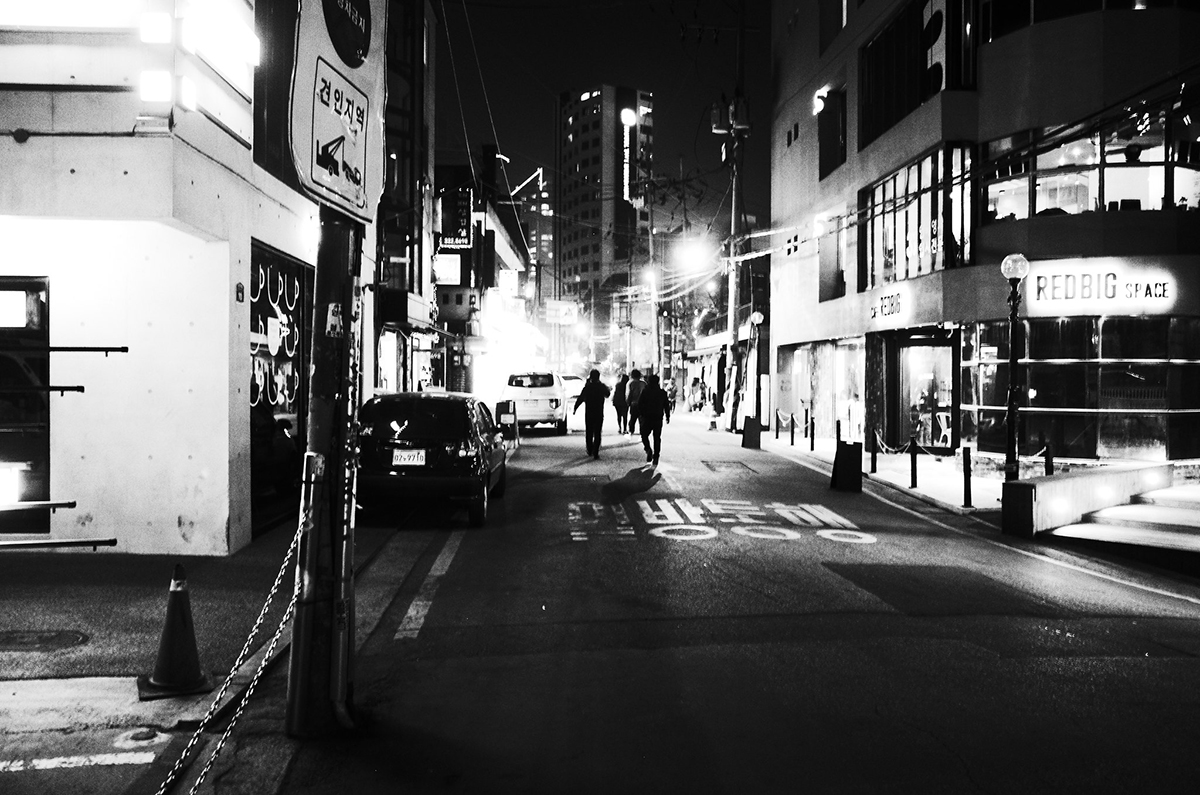
Hongdae at night (Photo: Tony via Flickr / CC BY 2.0)
Hongdae is a great place to catch live music and potentially even an impromptu K-pop performance. Later on, find an upbeat club night, particularly on weekends (Korean students are notoriously diligent in their studies). Other pastimes, like 24-hour gaming (PC-bang) and karaoke (noraebang) are amply provided for on many of the busy streets. Don’t miss a wander along Hongdae Mural Alley either, aka Picasso Street.
Where to stay: You’ll find excellent boutique and budget accommodations in this part of Seoul. One particularly stylish option is Orbit, a minimalist pink and white guest house a few blocks from Hongik Metro Station. L7 Hongdae by LOTTE is a classy hotel taking its lead from modern hotel chains like Ibis Styles. Lotte is a major chaebol company in South Korea; you’ll see that name a lot during your trip. Bunk Guesthouse is a good value alternative offering private and dorm rooms.
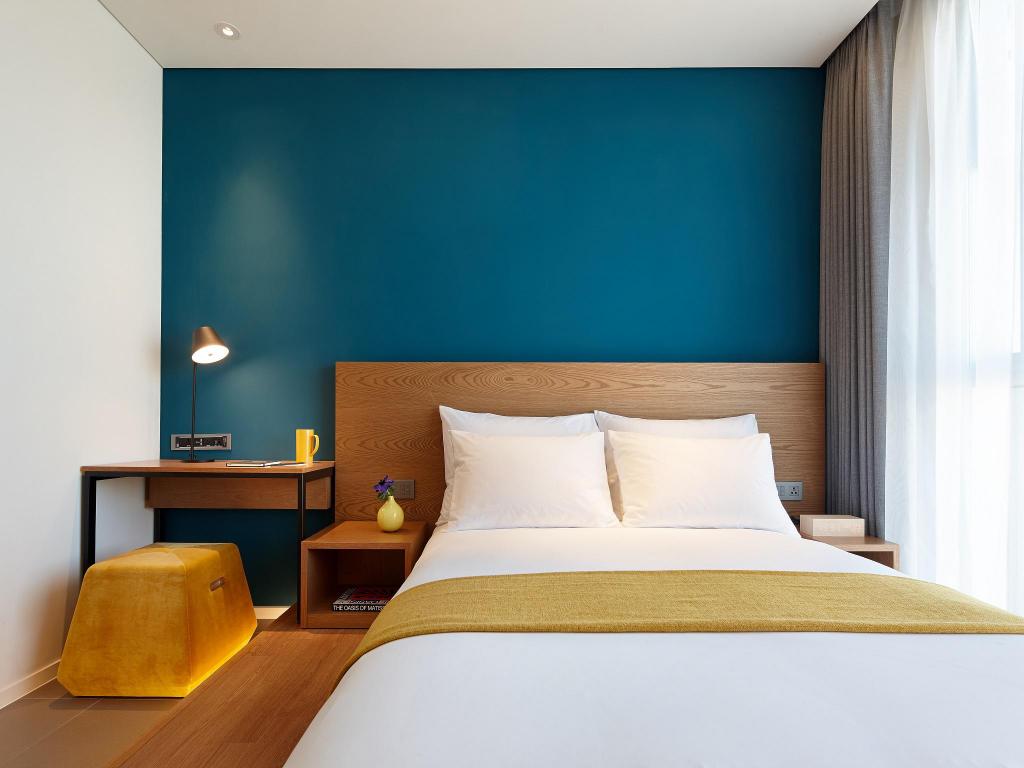
L7 Hongdae by LOTTE (Photo: Courtesy of L7 Hongdae by LOTTE)
Gangnam for Hanguk Chic
While most of Seoul’s historic charm lies north of the Han River, you’ll find many of the modern, brash and upmarket neighbourhoods on the southern bank. None is more synonymous with chic living than stylish Gangnam. Pillars of gleaming glass herald the city’s eminence in global commerce and finance, top class restaurants serve anything from global fare to traditional Korean dishes, washed down with maekgoeli.
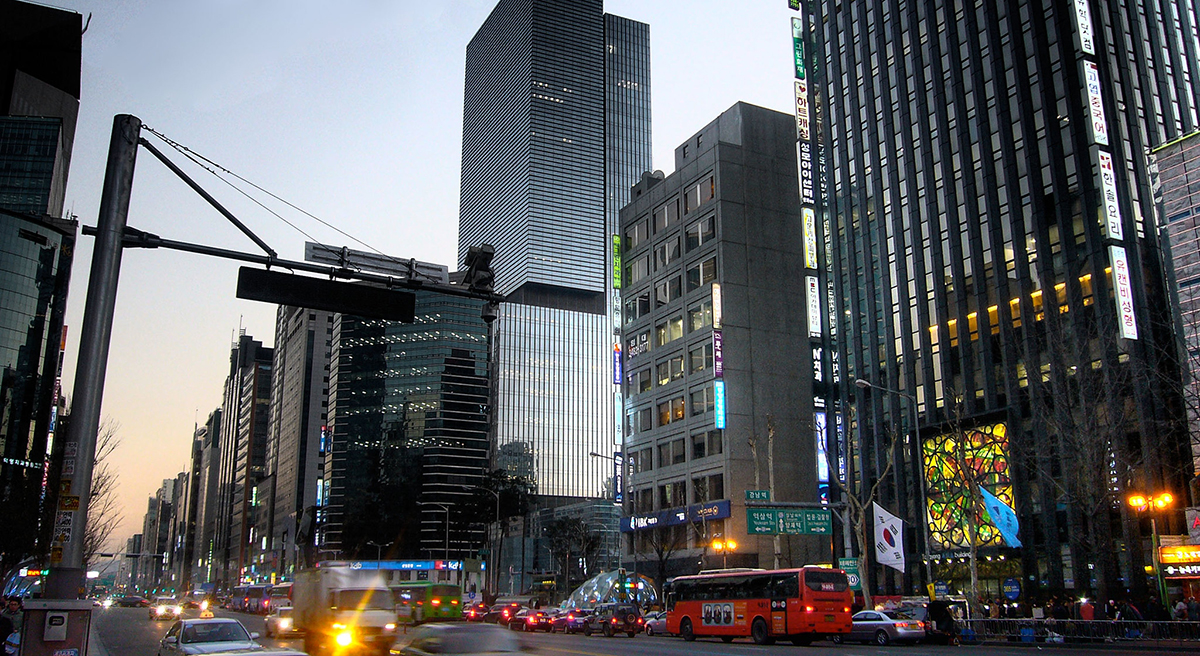
Modern Gangnam (Photo: Joop via Flickr / CC BY 2.0)
The COEX Mall is one of many modern shopping centres, surrounded by world trade institutions and convention facilities. And yet, just to the north of this modernity, you’ll find the tranquil juxtaposition of Bongeunsa Temple, a major eighth-century cultural relic with its colourful eaves and lavish decorations. When the sun goes down, the lights come up in the city’s classiest nightclubs, such as Octagon. You may even spot a K-pop or K-drama star in one of the cocktail bars or lounges further north near Apgujeong.
Where to stay: Gangnam is best for high-end stays in hotels with all mod-cons. Shilla is synonymous in Korea with luxury, and the Shilla Stay Yeoksam is en-pointe. This designer hotel is flashy inside and out. Even more remarkable in its exterior is Aiden by Best Western Cheongdam, with its swirling glass design. It is located close to Apgujeong. If you’d like to be near the main sights in Gangnam, try the Oakwood Premier COEX Center with its top-notch facilities including a large indoor pool.
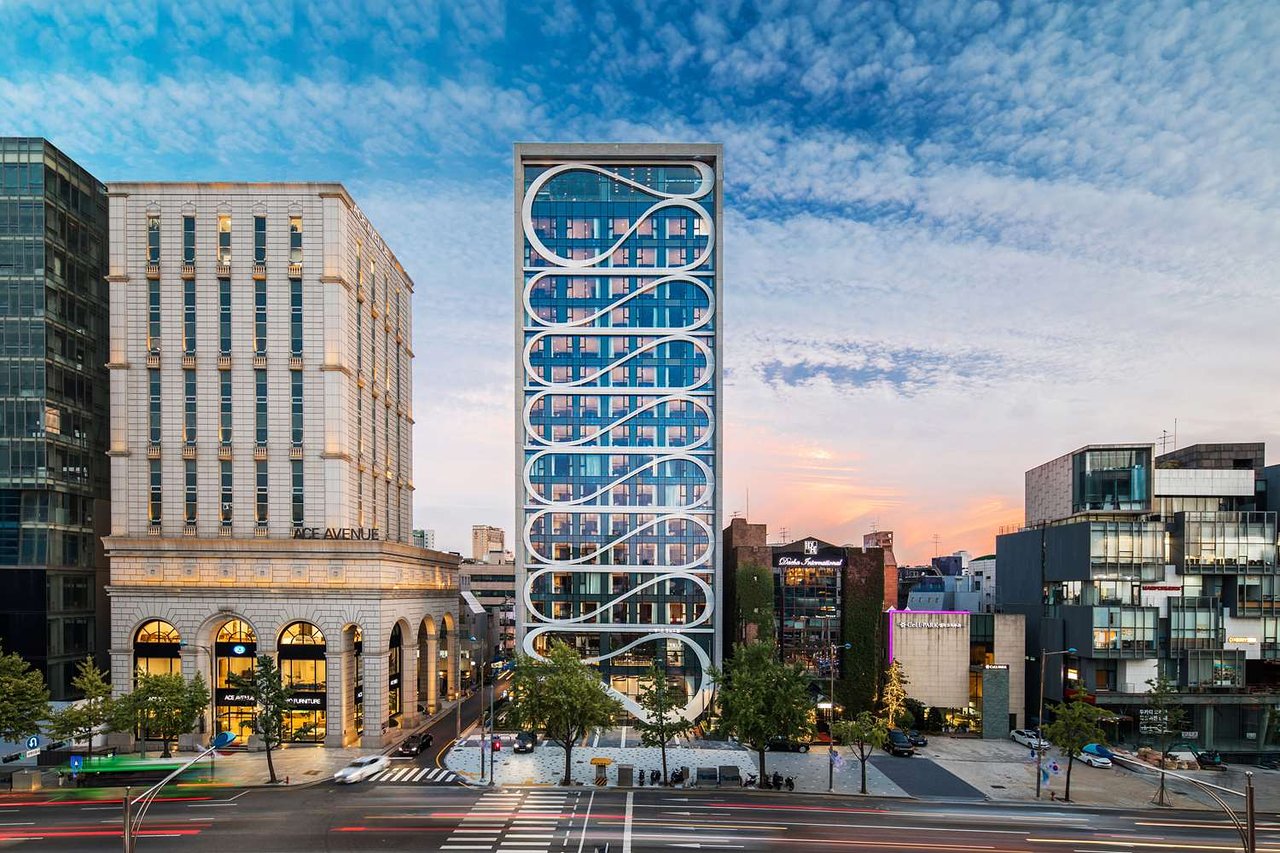
Aiden by Best Western Cheongdam (Photo: Courtesy of Aiden by Best Western Cheongdam)
Daehakro for creative charm
Another university area – one that is often, wrongly, overlooked by visitors to Seoul – is Daehakro. This area lies a little outside of the city centre and is the true creative soul of South Korea. Almost one hundred theatres of varying sizes contribute to making this area, with Hyehwa station at its heart, the West End of Korea. Art is everywhere you look, from statues hidden on the top storey of various buildings (and invisible to those who don’t look up) to various sculptures and installations. The area is studded with art galleries offering events and exhibitions, and the eating and drinking options, as with much of the city, are inexhaustible; eat out there daily for a year and you’ll barely scratch the surface of what’s available.
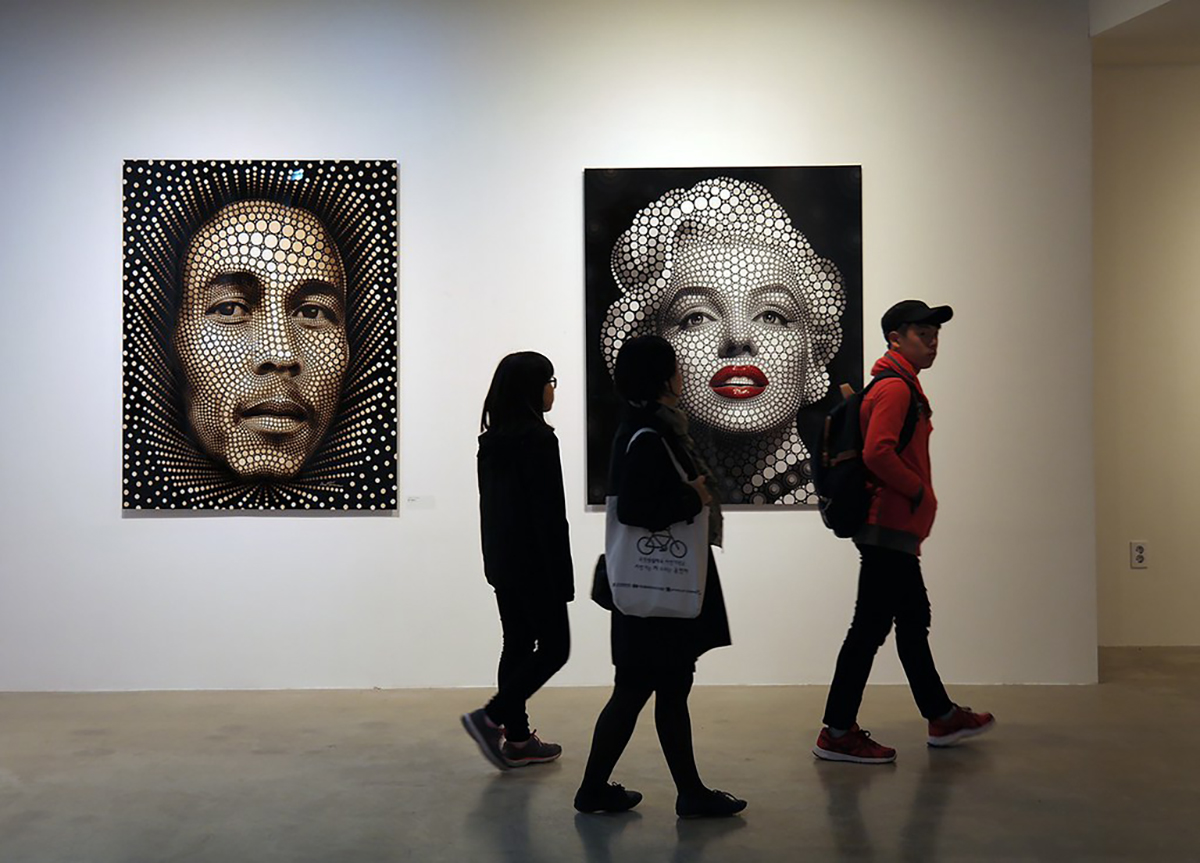
Art in Hyehwa (Photo: Ben Heine via Flickr / CC BY-SA 2.0)
Naksan Park is another highlight of this area. Testament to the extreme strength and power of Seoul in the past, the city once had a heavily fortified outer wall that was started in the late-14th century. Much of it has been rebuilt or restored so that 11.6 miles (18.6km) of this Fortress Wall of Seoul still exist, making for one of the city’s most enjoyable, and little-known excursions. The Seoul City Wall Trail, especially in autumn and spring, offers some of the most delightful city views of any place on the planet. You can easily reach part of it from Daehakro and follow it south to Dongdaemun.
Where to stay: Thanks to being outside of the major tourist regions of the city, you’re likely to find better value accommodation in the Daehakro area. Options were limited at the time of research due to Covid, but include full apartments with city views, such as at Naksan Balcony. Plenty of good boutique accommodation, for example Glue Hotel, is to be found to the southern end of Daehakro. There is some much better value traditional hanok accommodation in this area too, such as Eugene Hanok Guesthouse.
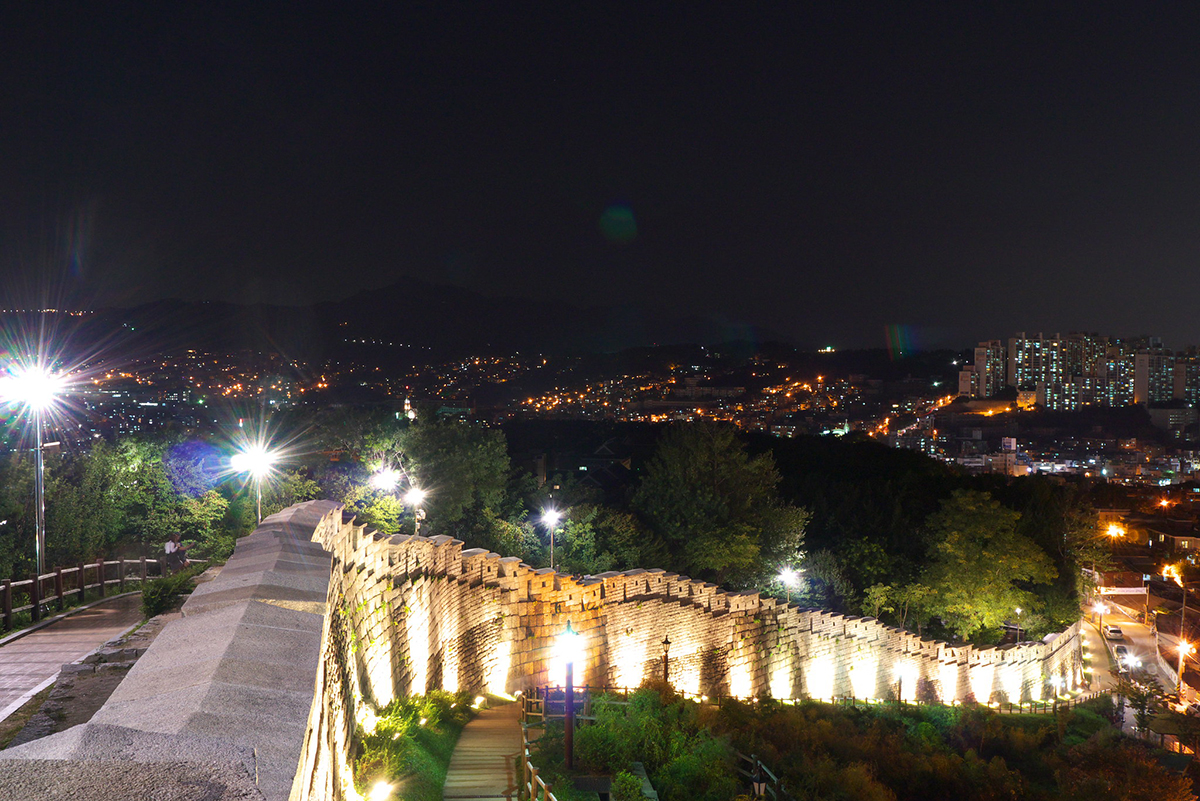
Naksan Park (Photo: travel oriented via Flickr / CC BY-SA 2.0)